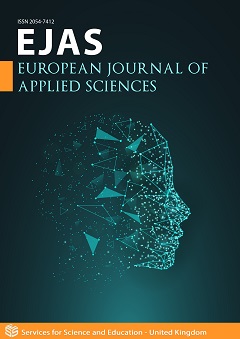The Contribution of Rivers to the Development of Circular Tourism Case Study: The Acheron River in Greece
DOI:
https://doi.org/10.14738/aivp.103.12427Keywords:
Circular tourism; Sustainable Development; Acheron River; Greece.Abstract
The present paper investigates the contribution of a river to the development of circular tourism in a place and specifically, a region. According to historical data, it has been proven that human societies tended to look for areas with rich natural resources to develop. These areas were traditionally selected because of the sustainability of these resources. Especially those areas that are located near rivers also had the advantages of moving people and products, fishing and the availability of water. The following text highlights the possibilities that exist for the utilization of riparian sites for the circular tourist development. The Acheron River in the Region of Epirus in Greece is selected as a case study. To serve the purpose, a questionnaire was constructed which was addressed to 352 visitors / tourists in the research area. The work concludes with conclusions and proposals regarding the development of circular tourism in this area.
References
.Mitoula R. (2017) “Conditions of Economic Development of Riverside Areas”, Journal of Sustainable Development, Environment, Culture, Economy, Society (www.sdct-journal.gr).
.Oikonomou A., Mitoula R. (2010) "Ecological Management of Buildings, Settlements and Cities in the European Union - Environmental Impact Studies", STAMOULI Publications, Athens.
.Krasopoulou M. (2020) "Wetland Network Management and Regional Development - As a Case Study: Peloponnese", PhD Thesis, Department of Economics and Sustainable Development, Harokopio University.
.Hatzimbiros, A. (2007) "Ecology - Ecosystems and environmental protection", Simmetria Parazisi, Athens.
.Mitoula R., Kaldis P. (2018) "City Branding and Sustainable Development. The Case of Cultural Routes", Parazisi Publications, Athens.
.https://www.britannica.com/science/river (accessed on April 2022)
.Economou A. (2007) "The contribution of spatial planning in addressing environmental problems in the coastal areas of Greece and European policy", Doctoral Thesis, Department of Urban Planning, NTUA School of Architecture.
.Mitoula R. (2000) "The effects of European Unification on the physiognomy of the Greek city" Doctoral Thesis, Department of Urban Planning - Spatial Planning, School of Architecture, NTUA.
.http://www.antagonistikotita.gr/epanek/ (accessed on April 2022).
.United Nations (1987) “Report of the World Commission on Environment and Development: Our Common Future” Oxford University Press, New York.
.Champion, A.G. & Hugo, G.J. (2003) «New Forms of Urbanization: Beyond the Urban/Rural Dichotomy», Aldershot: Ashgate.
.Binder, W. (2008) «River restoration: European Overview on Rivers in Urban Areas».
.Bernhardt, E. S. Palmer, M. (2007) «River Restoration in the Twenty-First Century: Data and Experiential Knowledge to Inform Future Efforts», Restoration Ecology, pp. 472-481.
.Economou A. (2009) “The Land Uses’ Consequences in Coastal Area of Faliraki and Delta Penaeus River in Greece”, American Journal of Agricultural and Biological Sciences 4 (1): 39-48.
.Directive 79/409 / EU Official Journal of the European Communities, Council Directive 79/409/43/EEC of 2 April 1992 on the conservation of wild birds, No L 103, pp.1-18
.Official Journal of the European Communities, Council Directive 92/43/EEC of 21 May 1992 on the conservation of natural habitats and of wild fauna and flora, No L 206, pp.7-50
.Integrated Program Interventions for the area mythical Acheron https://dimossouliou.gov.gr/wp-content/ (accessed May 2022).
Downloads
Published
How to Cite
Issue
Section
License
Copyright (c) 2022 Agisilaos Economou

This work is licensed under a Creative Commons Attribution 4.0 International License.






